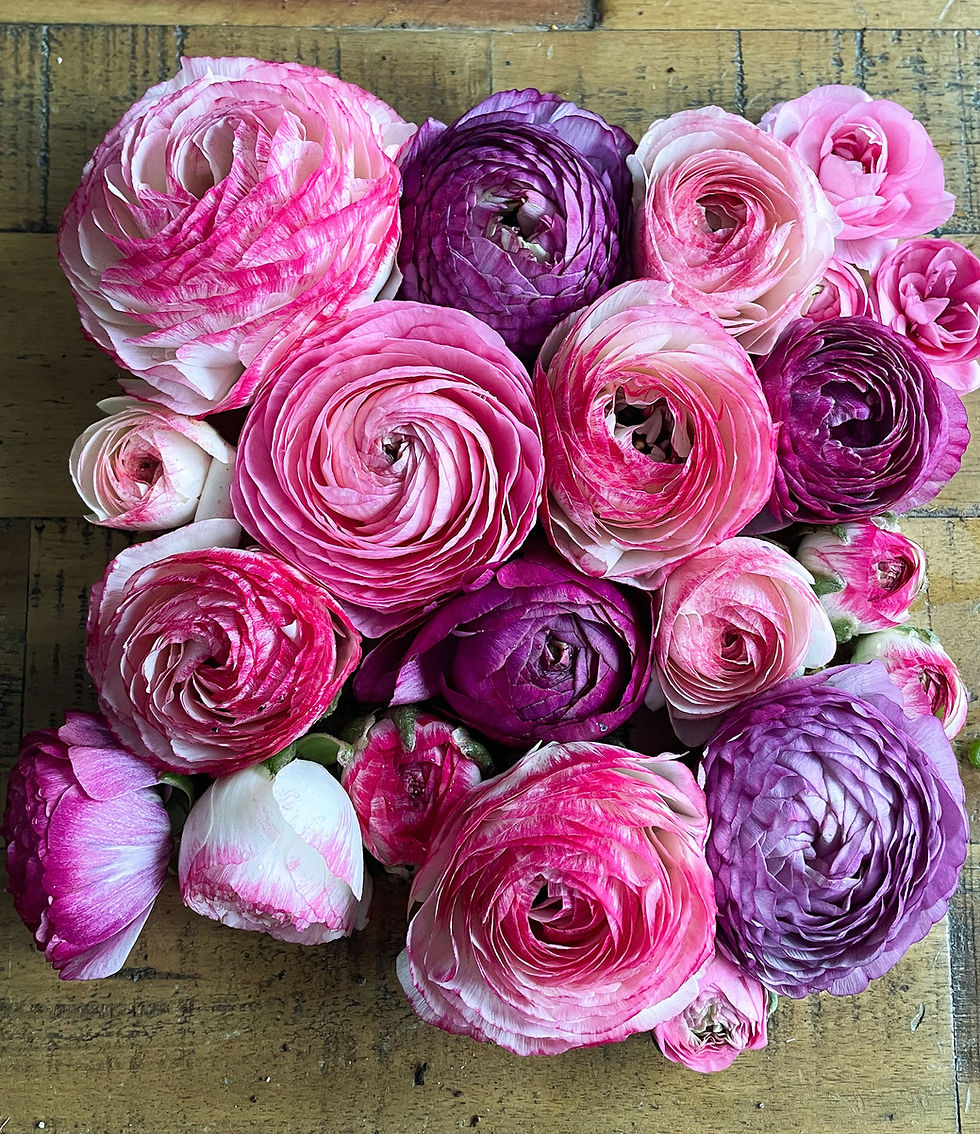Understanding your seed packet and top growing tips
- Barrhill Blooms

- Feb 13, 2023
- 4 min read
Updated: Jul 2, 2023

Top sowing tips
Aside from following the growing instructions (obvs!) Here are a few tips for getting the most success out of your seeds:
- Never ever let your sown seed trays dry out (ever). Ideally use some kind of mini greenhouse or humidity dome. If the seed trays dry out at the crucial stage of germination, your seeds will be toast. Newly emerged seedlings are super delicate and can only take a few hours of no moisture to kill them.
- Use vermiculite – Every time. Even for surface sown seeds. Vermiculite lets light through, but helps maintain moisture around the seed and improving germination it’s benefits are invaluable. I actually put mine in the Nutribullet to make it even finer (just don’t tell my partner haha)
- Sow ½ a packet at a time – we all screw up from time to time (I’m guilty too, sowing seeds and abandoning them, planting out and forgetting to water). Once your seeds are germinated and growing well, sow the 2nd half. This is also a small way of helping succession sowing
-Don’t be afraid to use a heat mat & grow lights – it’ll make you feel like a pro too. No matter how bright your windowsill is, your seedlings will still grow towards the light and get leggy Even a simple basic grow light stops this. Heats mats are a fabulous tool to jump start seeds sown in the cold dark months. Used with a grow light you can get a real head start with your annual spring/summer sowings.
- Once seedlings are established – remember to feed them! Just make sure you water down any fertilisers so you do not burn the seedlings. We stock a great range of Seacliff Organics supplements and fertilisers
- Planting out - It's important to harden off seedlings before transplanting. Around 4-7 days before planting out place your seedlings in a sheltered spot outside, gradually increasing exposure to the elements. The day before place your trays of seedlings in what will be their final growing spot for the full day/night prior to planting. Good practise is to give your seedlings a good feed prior to planting out. My favourite is always a mix of Tri-Kelp and Fish Hydrolysate. Of course - water them after planting.
- Pay attention to if the plants are frost hardy or not, and learn your last frost date - have frost cloth on hand incase of late cold spells.

Understanding you seed packet
Might sound super silly, but understanding your seed packet is invaluable for getting the most out of your seeds.
SOW
This is the earliest time we recommended sowing. To work out the latest time you can sow - look at the Days to Maturity and work backwards from your average last frost or the end of Autumn.
Season or Weeks? – Take your pick depending if you live in a frost free area or not. Unless stated otherwise all seeds are started indoors.
HOW
Refers to seed depth, light requirement and any special treatment required.
Cold stratification - a cold spell is sometimes required to break seed dormancy and get them to germinate. If cold stratification is required you have 2 options. Firstly place your seeds in the fridge for the recommended time, make sure they are kept moist, I like to reuse a plastic bread bag (as fridges are naturally dry environments). Alternatively if you live in an region that has cool winters with several frosts you can autumn sow seeds and allow mother nature to naturally stratify the seeds for you.
Vernalisation - This term can be banded around a bit. It's often associated with perennials. Essential some plants need a cold spell to trigger flowering. This is often why autumn sown perennials will flower in their first year, but spring sown ones will not.
SPACE
This is the recommendation to allow plants to reach their full size & potential. In high intensity cropping or flower farms you can usually plant closer together if you feed the plants well.
WHERE
Self explanatory - but important. If a full sun loving flowering is place in the shade it might fail to flower. Vice versa you plant a shade loving flower in full sun, it will likely wilt, shrivel up and probably fail to thrive.
HEIGHT & DAYS TO MATURITY
This is always an average, however many things can influence this, particularly weather and soil/plant health. If using days to maturity to establish last sowing date add on at least 2 - 3 weeks to allow for seed germination. Also plants sown in autumn will take longer to mature (add on approx 50-80 extra days) – however autumn sown plants are always more robust and vigorous compared to spring sown plants, as even though they don’t look like they are growing on the surface, they certainly are underneath.
GARDEN NOTES
I’ve popped basic notes here – but I often have a little more detail one each individual flower on my website, which includes a flower description.
Everything I sell I’ve either grown or growing, so any questions or advice or a bit of flowery chit chat just drop me a message.
Finally - Don’t forget to tag me on Instagram in all your fabulous flower pictures
@Barrhill_Blooms





Comments